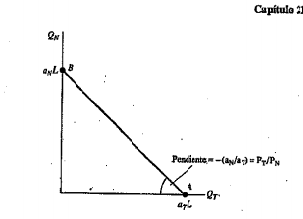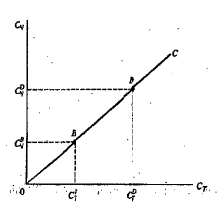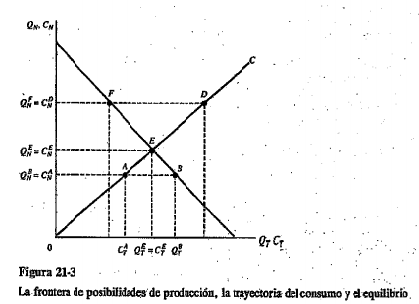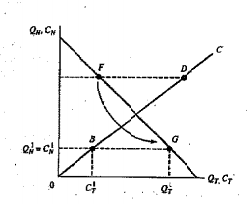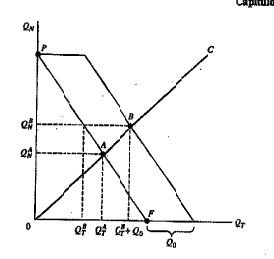The study of agglomeration economies can be traced back to Marshall(1920). Then expanded in Arrow(1962), Romer(1986) and later formalized by Glaeser et al. (1992) as the Marshall-Arrow-Romer (MAR) model. Agglomeration economies refers to a cluster of firms that belong to the same industry and are located in the same geographical scope. This agglomeration with help from the linkages established between the firms within the cluster, leads to coordination between them which leads to better and more innovation, specialization due to the geographical concentration of the entire chain of production , asset-sharing and, more importantly, knowledge spillovers. The fact that firms from the same industry tend to geographical concentrate has been greatly studied in the literature(Delgado, Porter, and Stern, 2014; Ellison and Glaeser, 1997; Jaffe et al, 1993, Kerr and Kominers, 2015; Krugman, 1991). Furthermore, assuming that the knowledge spillovers are great in those industries that the creation of new knowledge is important, David B. Audretsch and Maryann P. Feldman(1996) showed that the geographical concentration of innovation in some industries is mostly explained by the presence of knowledge spillovers.
The peculiarity that arises in these types of economies are the commonly known as knowledge spillovers or "marshallian externalities". As pointed out in Romer(1990), the production of knowledge is different from the production of any type of good due to the fact that knowledge is a partially-excludable non-rival good. The implication of this particular characteristics leads to the fact that firms cannot internalize all the benefits which comes from the knowledge produced. In consequence, firms that originally did not produce that knowledge would benefit from it. It is expected that in industry-clusters this knowledge spillovers would be significant due to the geographically proximity of the firms within the cluster. The role of knowledge spillovers has been of paramount importance in the economic growth literature with Loury (1979), Dasgupta and Stiglitz (1980), Romer (1990), Grossman and Helpman, (1991a,b) as a few examples; (see Griliches, 1979, for a survey on the empirical literature of the role of these knowledge spillovers).
Although of its recognized great importance in the literature of economic growth, due to its intrinsic characteristics, the proper measure of the knowledge spillovers remains as an open question in the literature. In consequence, as pointed out by Syverson (2011) any attempt to measure the knowledge spillovers has to address two fundamental challenges. The first one is known as the "reflection problem"(Manski, 1993,): correlated behaviours in a specific group can be attributed to knowledge spillovers or to unobserved third factors. Due to this problem, in order to correctly measure the knowledge spillovers, the researcher must find an exogenous source that caused differences in the knowledge stock of a subset of firms and then, after this exogenous shock, track the connections between the two groups of firms. The second challenge is to successfully track the evolution of the firms' behaviors. Researchers do not usually have sufficiently rich data in order to correctly perform that task.
The benefits of industry-clusters have gained attention in the public-policy sphere due to the work of Porter(1990, 1998, 2000). Governments all across the world are increasingly supporting cluster development programs,CDPs, (Crespi, Fernández-Arias, and Stein, 2014) with public funding as a tool to increase productivity and output in the several agglomeration economies that their countries posses. The existence of this program, and, therefore, the justification for government intervention, as noted by Maffioli, Petrobelli and Stucchi (2016), lies on the presence of coordination failures and positive externalities. Coordination failures are a common problem in development economics that lead to a sub-optimal allocation of resources if government intervention is not implemented. As Rosenstein-Rodan (1943) points out, coordination failures emerge when the investment decision of one agent is interrelated to those of others and externalities emerge due to this interrelation.
Once these failures have been resolved, the theory says, the linkages between the firms will be stronger. Accordingly, these stronger linkages will build trust, and therefore, foster the knowledge spillovers that tend to arise in every market transaction. Furthermore, as noted by Maffioli, Petrobelli and Stucchi (2016), firms with linkages may participate in social networks leading to positive outcomes: reduced transaction costs, increased efficiency, stronger originating and sharing of tacit knowledge, and stronger and more effective cooperative action. Although the objective of the CDPs is to strengthen the linkages and relationships between the firms within a cluster, this is just a tool to reach its final goal: to stimulate productivity and, therefore, output.
Despite its increasing importance, to the best of my knowledge, relatively few studies have successfully studied the indirect effects of cluster development programs. In Figal Garone et al (2015) using firm-level data on Brazilian SMEs for the 2002–09 period, the authors combine fixed effects with reweighting methods to estimate both the direct and indirect effects of a cluster development program carried out in Brazil in three variables: level of employment, value of exports and the probability of exporting. To estimate the indirect effects the authors classify as indirect beneficiaries those firms that did not participate in the program and that where located within a municipality where there were direct beneficiaries in the same industry. The direct beneficiaries were simply just the firms that participated in the program. The authors found positive spillovers in both export outcomes and a negative effect on unemployment on the first year that might have produced, according to the authors, due to a labor mobility from the indirect beneficiaries to the direct ones.
Furthermore, while in Figal Garone et al (2015) the indirect beneficiaries are defined through geographical proximity, in Castillo et al (2015) the authors classify the indirect beneficiaries through labor mobility. The indirect beneficiaries are the firms that contracted workers from a direct beneficiary. This paper successfully deals with the reflection problem posed by Manski because the difference in the stock of knowledge are cause by an exogenous source. This source is an innovation program called FONTAR that was carried out in Argentina between 1998 and 2013. The paper measures the spillover as the improvement in the performance of receiving firms due to the fact they hired skilled workers from the treated firms. To estimate this effect a lagged dependent variable model is used that allows to compare firms with similar evolution before they hire skilled workers from the participant firms. The authors find that receiving firms increased employment, wages, the exporting probability, and value of exports. In addition the authors conclude that these effects are driven by improved productivity.
In Boneu et al. (2014) the authors estimate the spillover effects associated with a technological cluster located in the city of Córdoba, Argentina. While the direct beneficiaries are the small and medium size firms located in the city of Córdoba that integrate the technological cluster, the indirect beneficiaries are the same type of firms but that are located in the outskirts of the city. The authors use a panel of firms in the ICT sector for the period 2003-2011 that allowed them to control for the dynamics of firms’ sales and fixed-effect applying the System GMM estimator. The paper found that for every new participant into the program the sales of non-participant increase by approximately 0.7%.
In Effie Kesidou and Henny Romijn (2008) the authors estimate the impact of local knowledge spillovers for the software cluster in Montevideo, Uruguay, in the innovation carried out by the firms within the cluster. The authors assume that the knowledge spillovers occur through three mechanisms: labor mobility, informal and formal interactions between the agents and, finally, firms' fusion. The data used by the authors to estimate the impact of the spillovers in the firms' performance was extract from a survey they carried out. The econometric analysis made by the authors conclude that the three mechanisms which they assumed at the beginning of the paper indeed have a strong impact in the performance of the firms's innovation activities.
Although this study is not as methodological rigorous as the three previous one, it is interesting because its represents one of the first attempts to directly measure the knowledge spillovers or indirect effects that arises in the context of a cluster.
Fuentes
Arrow, K. 1962. “Economic welfare and the allocation of resources for invention,” in R. Nelson Ed. The Rate and Direction of Inventive Activity, 609-625. Princeton: Princeton University Press.
Audretsch, D and Feldman,M. R&D Spillovers and the Geography of Innovation and Production. Source: The American Economic Review, Vol. 86, No. 3 (Jun., 1996), pp. 630-640
Boneu, Franco and Giuliodori, David and Maffioli, Alessandro and Rodríguez, Alejandro and
Stucchi, Rodolfo (2014): The spillover effects of the ICT cluster support in Córdoba.
Castillo, V., L. Figal Garone, A. Maffioli, S. Rojo, and R. Stucchi. 2015. “Knowledge Diffusion Through Workers Mobility.” Washington, DC: Inter-American Development Bank. Unpublished.
Crespi, G., E. Fernández-Arias, and E. Stein (eds.). 2014. Rethinking Productive Development: Sound Policies and Institutions for Economic Transformation. Development in the Americas (DIA) 2014. Washington, DC: Palgrave Macmillan and Inter-American Development Bank.
Dasgupta, Partha, and Stiglitz, Joseph E. "Uncertainty, Industrial Structure, and the Speed of R&D."
BellJ. Econ. 11 (Spring 1980): 1-28.
Delgado, M., M. Porter, and S. Stern. 2014. “Clusters, Convergence, and Economic Performance.” Research Policy 43(10): 1785–99.
Effie Kesidou and Henny Romijn. Do Local Knowledge Spillovers Matter for Development? An Empirical Study of Uruguay’s Software Cluster. World Development Vol. 36, No. 10, pp. 2004–2028, 2008.
Ellison, G., and E. Glaeser. 1997. “Geographic Concentration in U.S. Manufacturing Industries: A Dartboard Approach.” The Journal of Political Economy 105(5): 889–927.
Figal Garone, L., Maffioli, A., de Negri, J.A. et al. Cluster development policy, SME’s performance, and spillovers: evidence from Brazil. Small Bus Econ (2015) 44: 925. doi:10.1007/s11187-014-9620-2.
Glaeser EL, Kallal HD, Scheinkman JA, ShleiferA (1992) Growth of cities. Journal of Political Economy 100: 1126–1152
Griliches, Zvi. "Issues in Assessing the Contribution of Research and Development to Productivity Growth." BellJ. Econ. 10 (Spring 1979): 92-116.
Grossman, G. M., & Helpman, E. (1991a). Innovation and growth in the global economy. Cambridge MA: MIT Press.
——— (1991b). Quality ladders in the theory of growth. Review of Economic Studies 58(1), 43–61.
Jaffe, A.; Trajtenberg, M and Henderson, R. "Geographic Local- ization of Knowledge Spillovers as Evi- denced by Patent Citations." Quarterly Journal of Economics, August 1993, 63(3), pp. 577-98.
Kerr, W. R., and S. D. Kominers. 2015. “Agglomerative Forces and Cluster Shapes.” The Review of Economics and Statistics, forthcoming.
Krugman, P. 1991. Geography and Trade. Cambridge, MA: MIT Press.
Loury, Glenn C. "Market Structure and Innovation." QJ.E. 93 (August 1979): 395-410.
Maffioli, Petrobelli and Stucchi (2016), "The Impact Evaluation of Cluster Development Programs: Methods and Practices". Inter-American Development Bank
Manski, C. F. (1993). Identification of endogenous social effects: the reflection problem. The Review of Economic Studies, 60(3), 531-542.
Marshall, A. 1920. Principles of economics. 8th Edition. London: Macmillan.
Porter, M., 1990. Competitive Advantage of Nations. New York, NY: Free Press
———.1998. Clusters and the new economics of competition. Harvard Business Review 76 (6), 77–91.
———.2000. Location, competition, and economic development: local clusters in a global economy. Economic Development Quarterly 14 (1), 15–34.
Romer, P. 1986. “Increasing returns and long-run growth.” The Journal of Political Economy 94, pp.1002-1037.
———.Endogenous technological change. Journal of Political Economy, 98(5), S71–S102.
Rosenstein-Rodan, P. N. 1943. “Problems of Industrialization of Eastern and South-Eastern Europe.” The Economic Journal 53(210/211): 202–11.
Syverson, C. (2011). What determines productivity? Journal of Economic Literature, 49(2), 326-65.
----------------------------------------------
This literature review was written while I was doing an internship in CINVE(Centro de Investigaciones Económicas) during the month of December, 2016.

